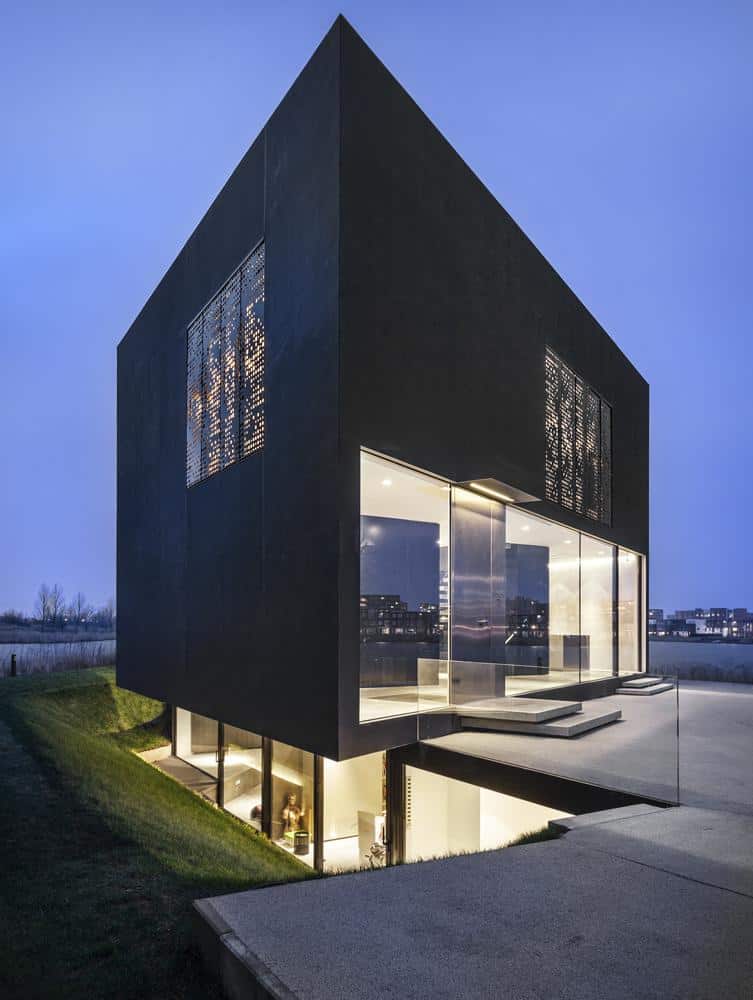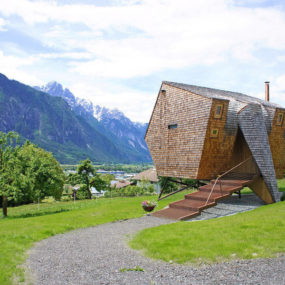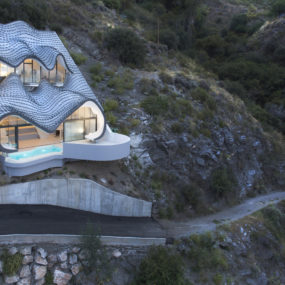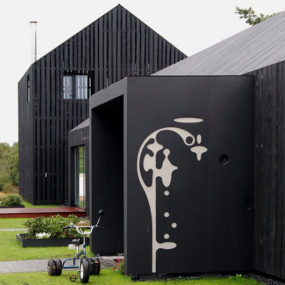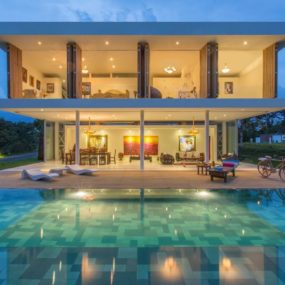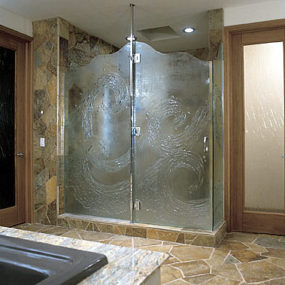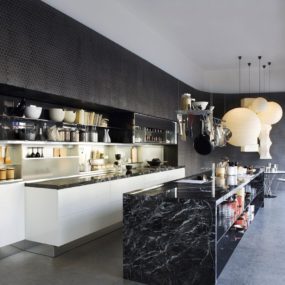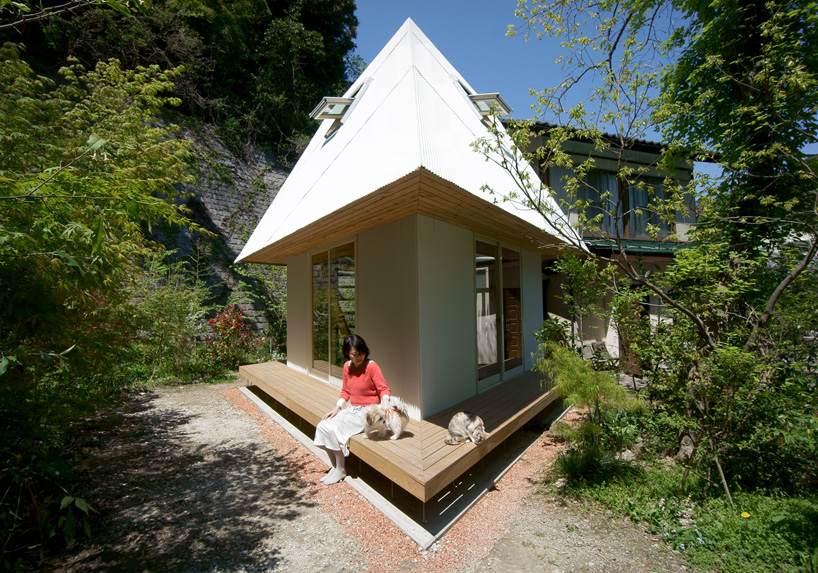
Built as an addition to a more traditional home in the small but historic city of Kamakura, this small yet tall building by Yuji Tanabe and his firm serves as a functional (if limited) home for the father of the one of the main homeowners. In addition, its structure adds an additional meeting point for the entire family, with a first-floor living area big enough for the whole group. The compact house itself is split into three rooms, arranged on a unique diamond-shaped floorplan. Upstairs is a bedroom, while the ground level includes the aforementioned living area as well as a small bathroom. It’s all packaged in a contemporary structure with a deeply-sloping roof and high exterior walls, a modern contrast to the master house.
This isn’t just some simple three-room cabin, however, starting with its diamond floorplan. Yuji Tanabe’s design is very well executed, with a number of innovative tricks to expand the space and modernize traditional rooms. An outside porch wraps around the first half of the house before diving into the building itself, separating two rooms while bringing in a healthy of natural light. Upstairs, the space above the bathroom isn’t wasted, turned into a deck a half-story above the bedroom. The house feels much larger than it actually is because of its vertical layout and tall roof, taking up little property while seeming from the inside to be quite spacious. The addition makes for a chic, compact home of its own, complimented by smart design choices and a modern structure.
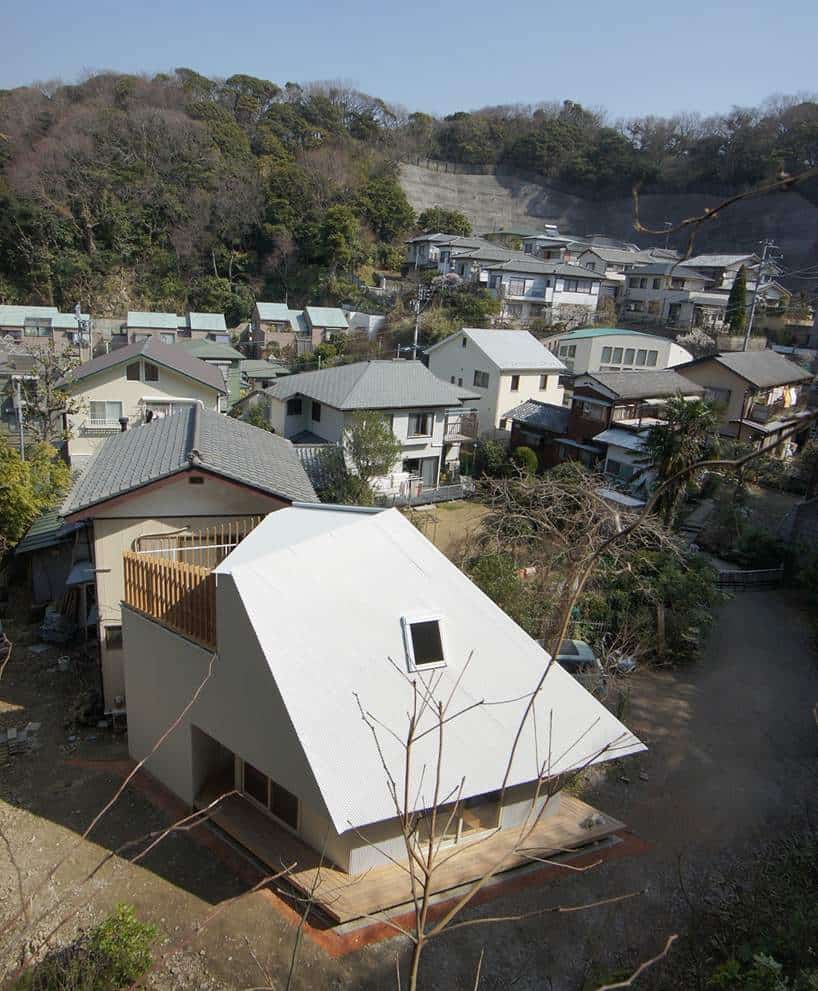
From certain angles, the diamond-shaped floorplan of the house is less apparent that from others. The architect didn’t choose to be bound by the basic tenets of the diamond plan, branching that general overhead shape into a creative array of roof angles, decks, and wall styles.
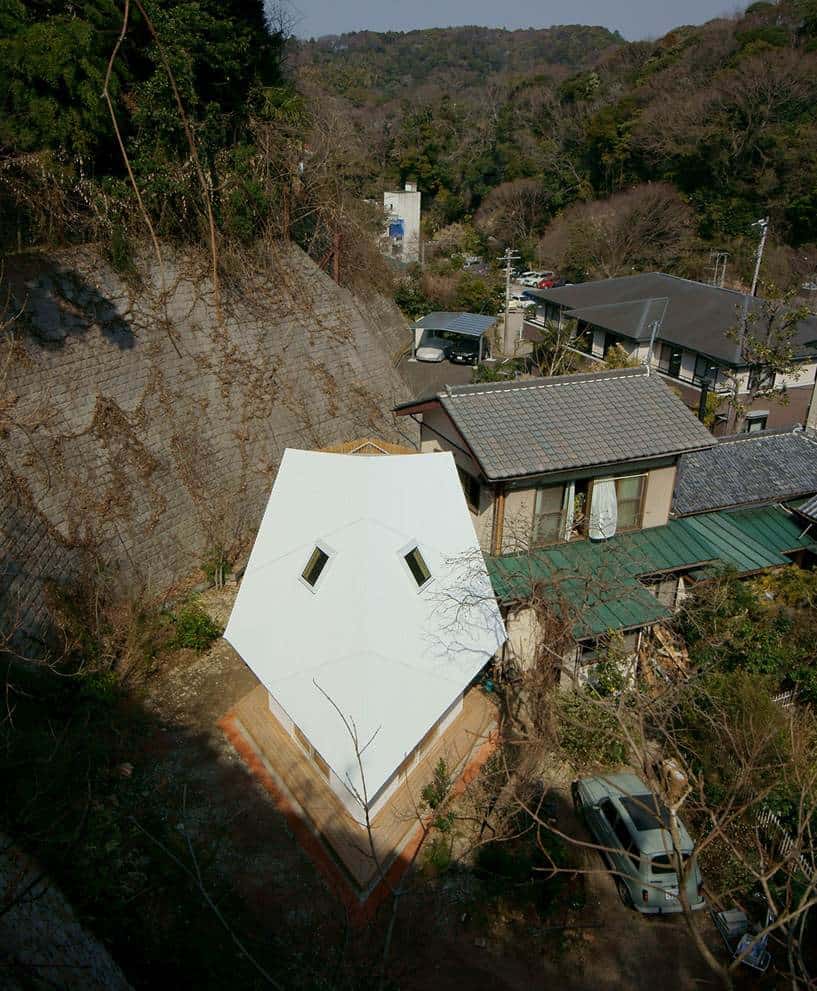
From a straight-on overhead angle, the overall shape of the house becomes startlingly clear, but even at this vantage point it can still be tricky. You have to keep a close eye out for the wooden deck in one corner of the house to complete the shape, since its finish it different from that of the rest of the roof.
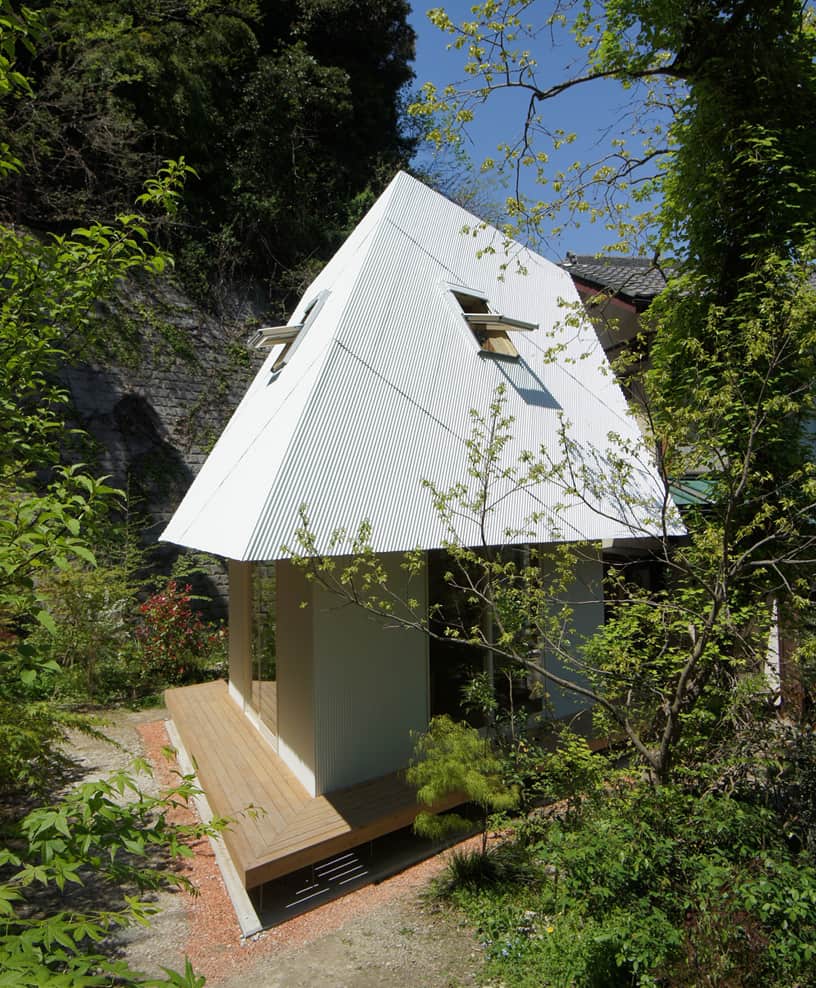
The front-facing side of the diminutive residence is where the building is at its most narrow. Notice how the roof’s overhang matches the width of the deck on the outside of the structure, properly framing its interior spaces.

At the extreme front and rear ends of the home, its symmetry is most emphasized. Even the second-floor window vents are directly across from one another, creating a mirror image from left to right.

Interestingly, one side of the home has a door-length window placed in front of the main staircase, an incongruous design compromise made in the name of symmetry. Every other first-floor window set does double duty as a functional sliding door.
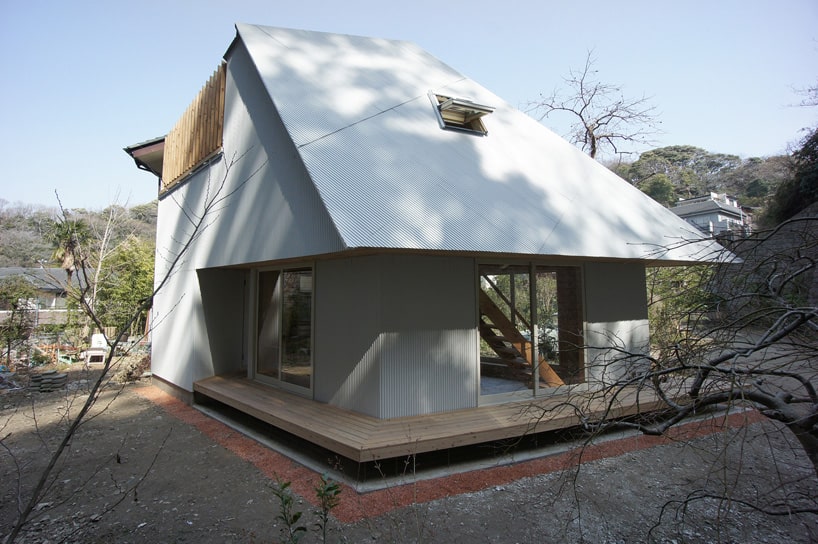
While the front half of the compact residence has a sharply-sloped roof, the rear portion has two-story exterior walls culminating in a deck and a flat rooftop.
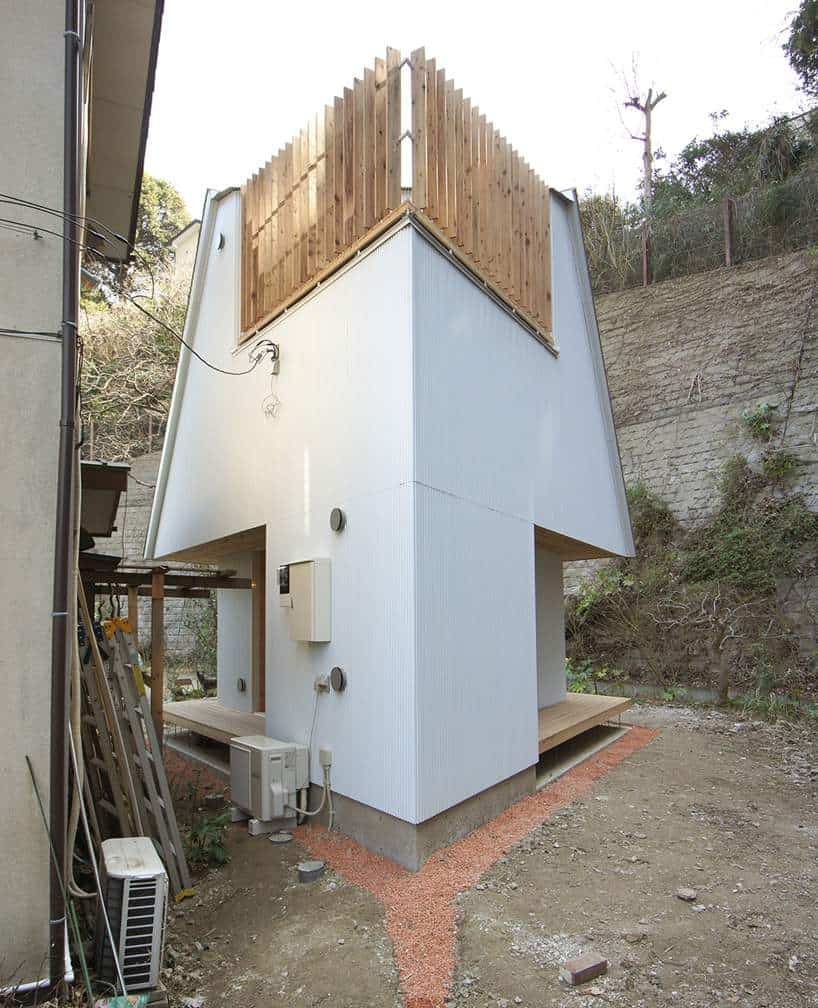
The rearmost part of the home, whose bottom-floor structure is a small bathroom, exhibits the same type of symmetry as the front, completing the building’s diamond profile.
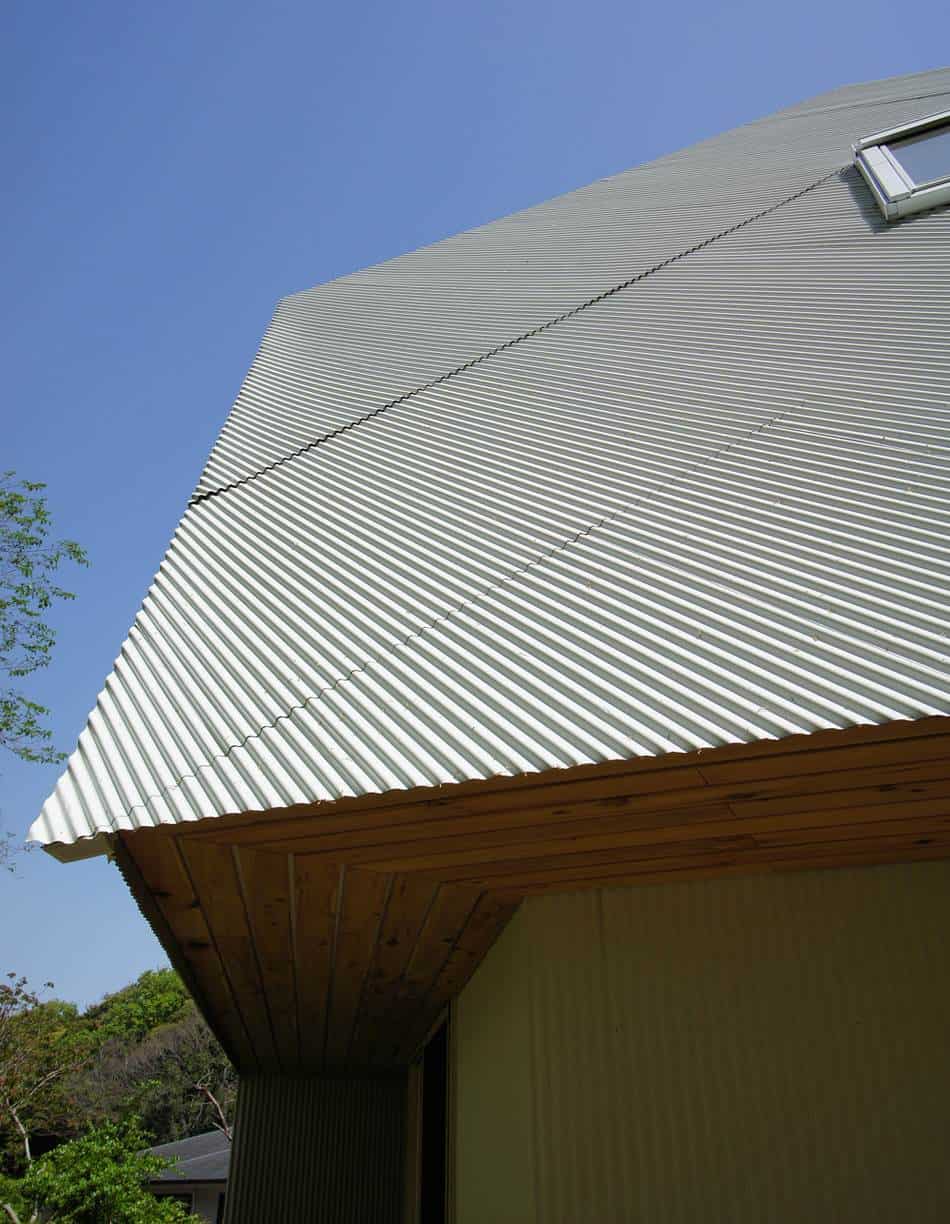
Though corrugated metal is a rather loud choice in roofing on its own when facing the elements, this design includes a layer of plywood underneath that provides protection, isolation, and insulation to the house.

The small wooden deck that surrounds the exterior of the home’s front half ducks underneath the roof between the first floor living space and the bathroom, creating a short and creative open-air hallway.

Though the space is unfinished, you can get a general idea of its future with a cursory tour of its indoor spaces, each of them comprised of a single room.
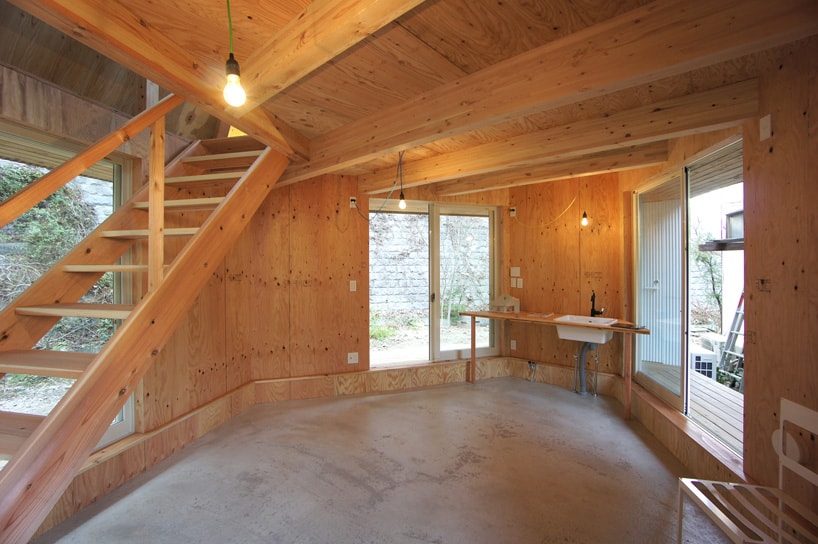
The first floor serves as a welcoming area, a kitchen, and a living room, provided with plenty of light from its four ceiling-height window sets.
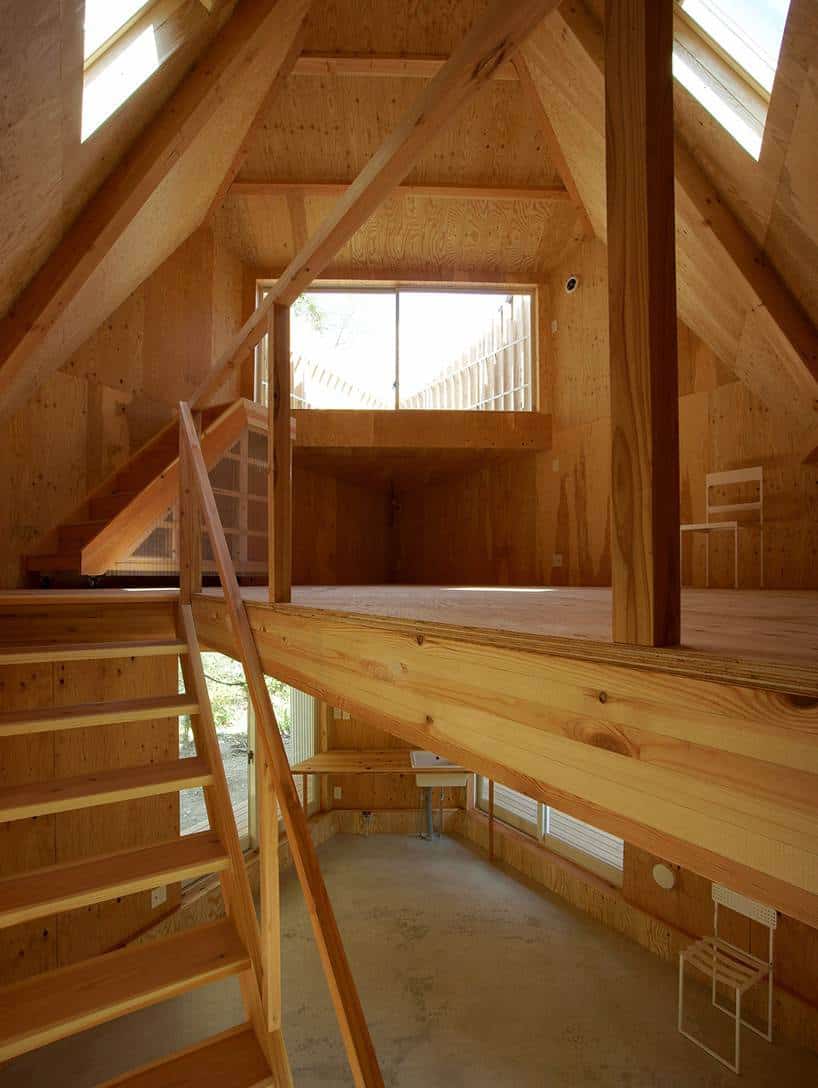
Sitting under the sloping rooftop, the second floor seems much more spacious than the first despite having nearly the same floorplan. Most of its windows are set high in the walls and ceiling, making the space suited to duties as a bedroom or other private room.
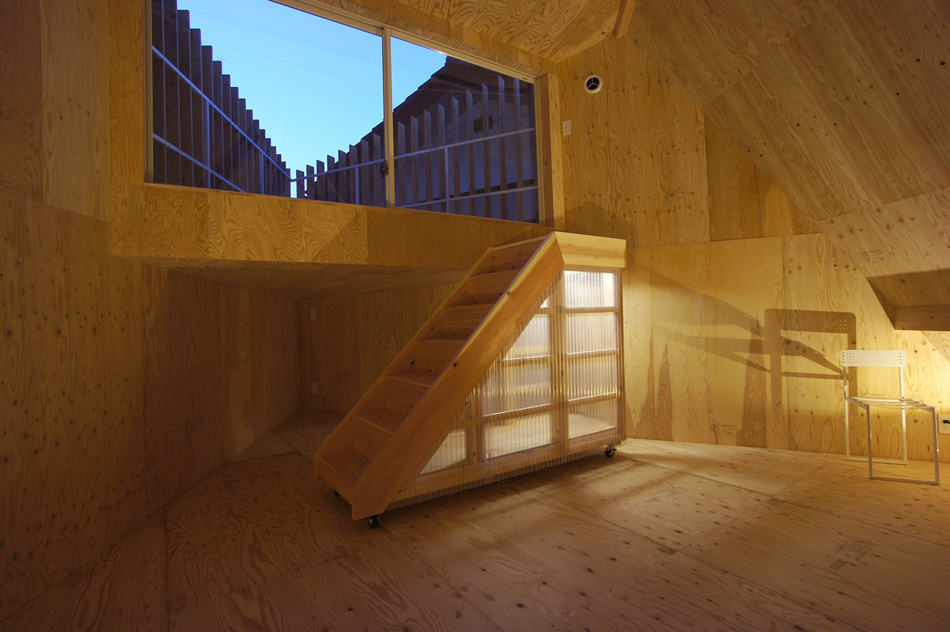
Despite its small footprint, this home is not lacking for vertical space. Yet another staircase leads up to a small corner deck at the back of the room, through an opening that doubles as the second floor’s largest window.
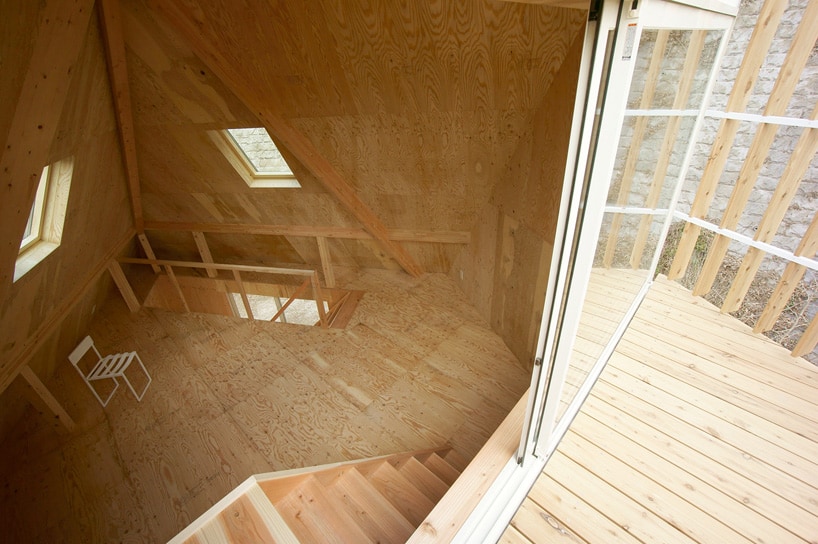
From above, the second story looks almost cavernous, waiting to be filled to the brim with furniture and decorated all around with art and decor pieces.

Despite its small square footage total, the decks still provides a refreshing, quiet respite from daily life for one person or a couple.
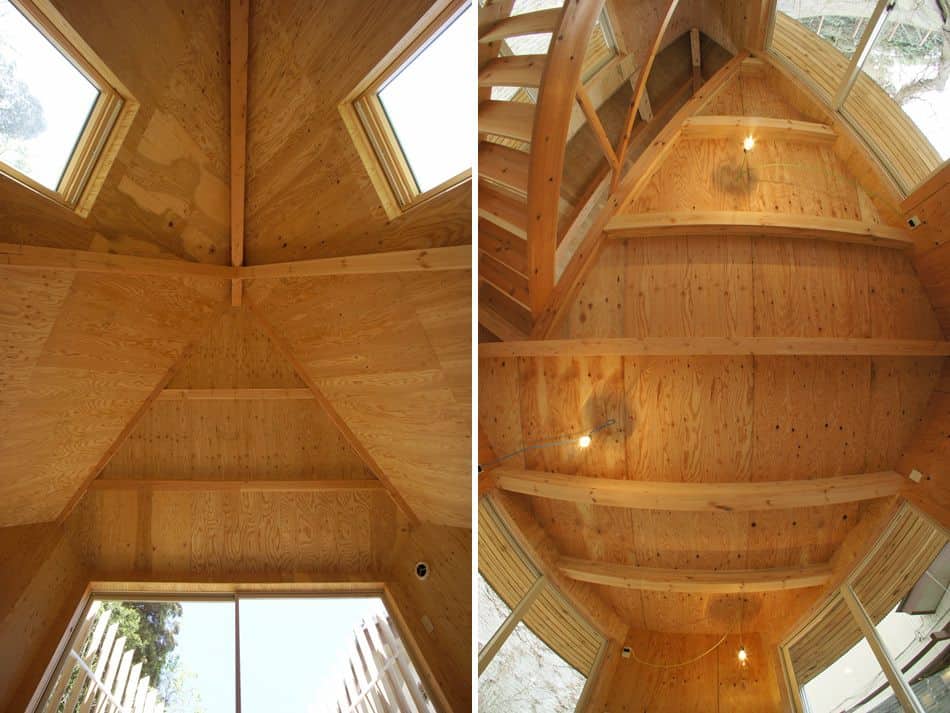
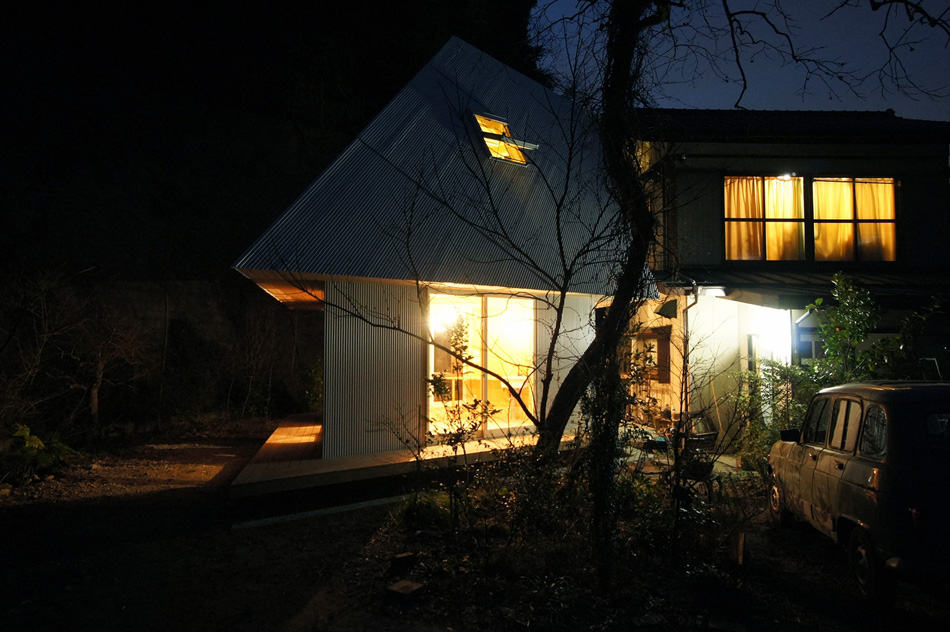

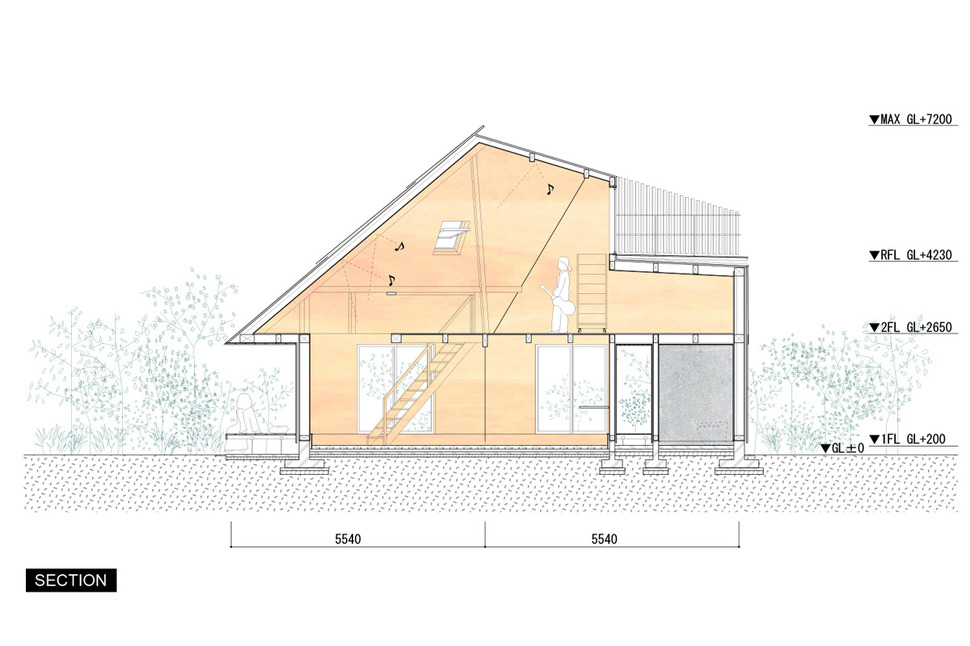
Yuji Tanabe
